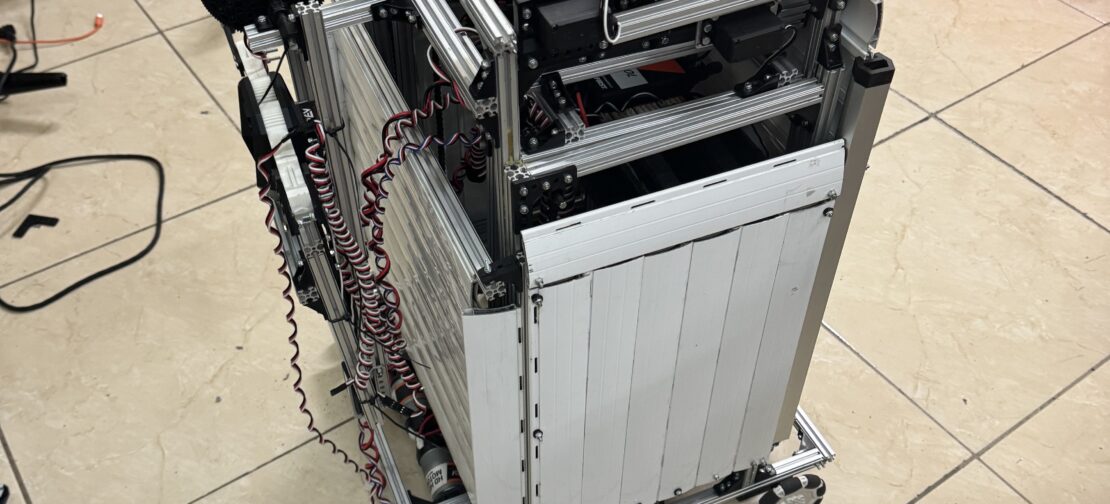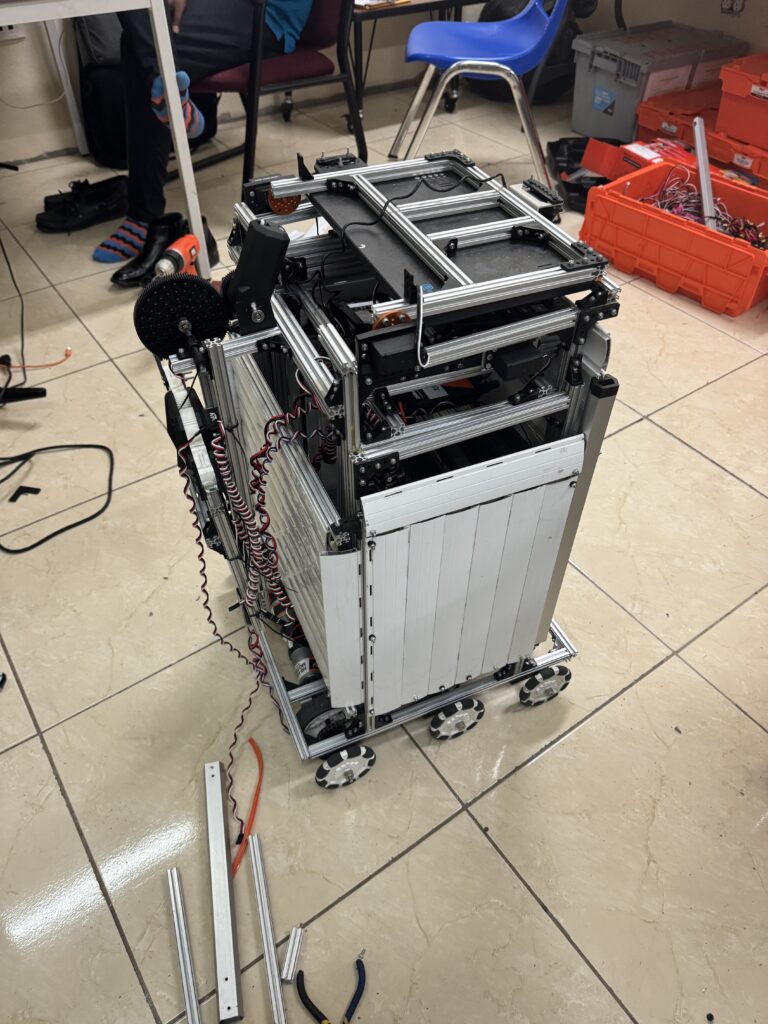
The St. Kitts and Nevis Robotics Association (SKNRA) has developed the PhV.1 (Photon Hardware Version 1) and PSv.1 (Photon Software Version 1), a multifunctional robotics platform designed to foster continuous development and advancement in the OECS region. This document details the platform’s design, capabilities, and purpose, highlighting its potential applications in various industries, including education, tourism, business, and research. The symbolic name “PhV.1” and “PSv.1” reflects the SKNRA’s vision of igniting a spark of innovation and progress, akin to the illuminating power of a photon, throughout the Eastern Caribbean.
Keywords: PhV.1, PSv.1, Robotics, OECS, Modular design, Sensor integration, Object recognition, Java

The SKNRA, dedicated to promoting technological innovation and educational opportunities in the Eastern Caribbean, has created the PhV.1 and PSv.1 platform under the leadership of Dr. Ricardo Neil, Chairman and Founder of SKNRA and the OECS Robotics Association. This project aligns with the organization’s mission to “Inspire Youths with STEAM” by providing a platform for continuous development, experimentation, and hands-on learning in the field of robotics.
The PhV.1 boasts a modular design, allowing for the seamless addition and integration of various components, facilitating future advancements and customizations based on evolving needs and functionalities (Krick et al., 2018). This adaptability makes the platform a valuable tool for researchers and developers.
Furthermore, the PhV.1 is designed to accommodate a diverse range of sensors, empowering it to gather and process information from its environment. Examples include distance sensors, light sensors, and color sensors, enabling the platform to adapt to various applications (Murphy, 2000).
The platform’s compatibility with components from REV Robotics, a leading provider of educational robotics products, opens doors for further development and exploration within the realm of automation. This compatibility allows for the integration of artificial intelligence (AI) for enhanced capabilities, such as autonomous tasks and machine learning (REV Robotics n.d.).
Additionally, the PhV.1 incorporates an object recognition system, enabling it to identify and interact with objects in its surroundings. This opens doors for diverse applications, including object manipulation, navigation, and autonomous tasks, such as inventory management or product sorting (Liu et al., 2016).
The PSv.1 software is programmed using Java, a widely used and versatile programming language. This selection simplifies development, learning, and potential collaboration within the educational and research communities, as Java is a popular language taught in schools and universities (Barnes & Kölling, 2019).
The platform functions as a test bench for both hardware and software components. This allows researchers and developers to experiment, evaluate, and refine various robotics functionalities within a controlled environment, accelerating the development cycle and improving the overall effectiveness of the platform (Krick et al., 2018).
Furthermore, the PhV.1 and PSv.1 create an experimental platform for continuous development. This allows for ongoing exploration of new technologies, strategies, and applications in the field of robotics, fostering innovation and progress within the OECS region.
The name “PhV.1” and “PSv.1” are chosen with the symbolic meaning of “Photon.” A photon represents light, signifying the illumination and advancement of technology within the OECS region, with St. Kitts and Nevis serving as the starting point. This name embodies the SKNRA’s vision of igniting a spark of innovation and progress in the region through the PhV.1 and PSv.1 platform.
The PhV.1 and PSv.1 platform demonstrates potential applications across various industries within the OECS region:
The platform can serve as a valuable tool for introducing students to robotics concepts, programming fundamentals, and problem-solving skills. It can also be integrated into STEAM education initiatives, fostering a well-rounded approach to learning that combines science, technology, engineering, arts, and mathematics.
The platform’s object recognition and sensor capabilities can be leveraged to create interactive exhibits in museums or cultural centers, enhancing visitor engagement and providing educational information in a captivating manner. Additionally, PhV.1, equipped with navigation features, could potentially serve as a guide for automated tours in historical sites or tourist destinations, offering personalized experiences and accessibility for visitors.
The platform’s adaptability and diverse functionalities offer potential applications in various business settings. For instance, PhV.1’s object recognition abilities can be applied in warehouses or storerooms to automate inventory management tasks. The platform could scan and identify items, facilitating stocktaking, organization, and real-time inventory tracking, leading to increased efficiency and reduced human error. Additionally, businesses can utilize PhV.1 for interactive product demonstrations, showcasing functionalities and features in an engaging and informative way, particularly valuable in retail settings or trade shows.
The platform’s adaptability to various sensors can be valuable in agricultural research. By integrating sensors that measure factors like soil moisture, light levels, and temperature, researchers can gather real-time data to optimize crop growth and agricultural practices. Additionally, PhV.1 can be equipped with sensors to monitor environmental parameters like air quality, water quality, or noise levels. This data collection can be crucial for environmental research and sustainable development initiatives within the OECS region.
The PhV.1 and PSv.1, developed by the SKNRA under the leadership of Dr. Ricardo Neil, represent a significant step forward in fostering technological advancements and educational opportunities in the OECS region. The platform’s modular design, sensor integration, REV Robotics compatibility, object recognition system, and Java-based software offer a versatile and accessible platform for continuous development, experimentation, and exploration within the field of robotics. The symbolic name, “Photon,” reflects the SKNRA’s aspiration to illuminate the path towards a brighter technological future in the Eastern Caribbean.
Further research and development will focus on expanding the platform’s capabilities through the integration of additional sensors, actuators, and AI functionalities. Exploring various applications within education, research, and business sectors will broaden the platform’s impact and solidify its role in advancing the field of robotics in the OECS region.